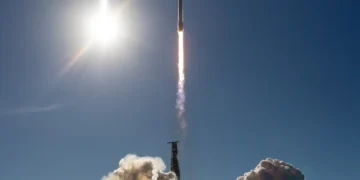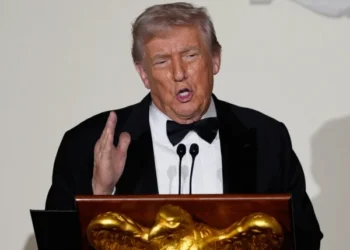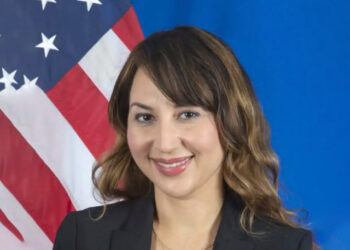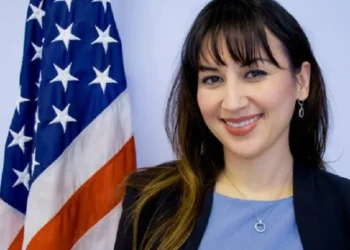Introduction: A New Hope for War-Torn Syria
In a major diplomatic breakthrough, United States Secretary of State Marco Rubio announced that various warring factions in Syria have agreed to cease hostilities. The announcement marks a significant step forward in efforts to de-escalate the long-running conflict that has plagued Syria for over a decade, resulting in immense human suffering and regional instability.
According to Secretary Rubio, this development is the result of an intensive diplomatic initiative involving direct engagement with all key stakeholders, both within Syria and internationally. The ceasefire agreement includes specific and mutually agreed-upon steps designed to reduce violence, facilitate humanitarian aid, and initiate a broader peace process.
Background: More Than a Decade of War
The Syrian civil war began in 2011 as part of the wider Arab Spring movement. What started as peaceful protests against the regime of President Bashar al-Assad quickly escalated into a full-scale civil war involving multiple domestic and international actors.
Over the years, the conflict has drawn in various groups including:
- The Syrian Arab Army (SAA) loyal to Assad
- Opposition rebel groups
- Kurdish militias such as the Syrian Democratic Forces (SDF)
- Terrorist organizations including ISIS and former al-Nusra Front (now Hayat Tahrir al-Sham)
- Foreign actors such as Russia, Iran, Turkey, the United States, and Israel
The result has been a complex web of alliances and rivalries, contributing to immense destruction, mass displacement, and a profound humanitarian crisis. According to the United Nations, over 500,000 people have been killed, and more than 13 million Syrians have been displaced internally or forced to flee abroad.
Marco Rubio: Direct Engagement Leads to Ceasefire Agreement
In a press briefing from Washington, Secretary of State Marco Rubio emphasized that this ceasefire was the result of direct, coordinated efforts among key regional and international stakeholders.
“A joint strategy has been determined by contacting all the key parties directly, under which specific steps have been mutually agreed upon,” said Rubio. “We hope these steps will result in a significant reduction in the ongoing humanitarian tragedy and tension in Syria starting tonight.”
He stressed the importance of all parties adhering to their commitments and following through on their responsibilities. The U.S. Department of State has also confirmed that American diplomatic and intelligence channels have been active in securing guarantees from both armed opposition groups and the Assad government.
Ceasefire Specifics: What We Know So Far
While the full details of the ceasefire agreement remain confidential for security reasons, sources indicate the following key points:
- Immediate cessation of hostilities in the southern and central regions, particularly in Sweida, Idlib, and parts of Aleppo
- Facilitated humanitarian access to besieged areas, including the delivery of food, medical supplies, and shelter
- Prisoner exchanges between the Syrian government and rebel factions
- Gradual military withdrawal of troops from certain contested zones
- International monitoring through neutral third-party observers, possibly under the United Nations or the Arab League
Syrian Government Confirms Military Withdrawal from Sweida
In response to the ceasefire, the Syrian government has confirmed that its military forces have begun a phased withdrawal from the southern city of Sweida, a historically restive region with a significant Druze population.
This move is seen as a gesture of goodwill and an acknowledgment of the broader need for de-escalation. The Syrian Ministry of Defense released a brief statement noting that the withdrawal was “in accordance with recent national reconciliation efforts” and aimed at “restoring civil normalcy.”
Recent Israeli Airstrikes on Damascus: A Catalyst for Peace?
Analysts suggest that the decision to pursue a ceasefire may have been influenced by recent Israeli airstrikes on targets near Damascus, including military infrastructure allegedly linked to Iranian proxy forces.
Israel has carried out hundreds of airstrikes inside Syria over the past several years, primarily targeting Iranian-backed militias and weapons depots intended for Hezbollah. However, the intensity and timing of the recent attacks reportedly created internal pressure within Syrian military and political circles to reduce overall tensions and avoid a wider regional conflict.
According to Middle East expert Dr. Lina Khoury of the Brookings Doha Center:
“The latest Israeli strikes rattled the Assad regime and demonstrated the continued vulnerability of Damascus. It’s likely that this prompted urgent consultations between Syria, Russia, and Iran—ultimately leading to a more serious consideration of de-escalation.”
U.S. Pressure and the Demand for Troop Withdrawal
Another driving force behind the ceasefire is increasing pressure from the United States for a withdrawal of foreign troops, including American forces stationed in eastern Syria and Iranian-backed militias deployed across the country.
Rubio acknowledged the importance of re-evaluating the U.S. military presence in Syria, stating:
“The U.S. remains committed to counterterrorism efforts in Syria, but we are also aware that a lasting political solution requires a careful rebalancing of our strategic footprint.”
Calls for American withdrawal have grown louder both domestically and internationally, particularly in light of shifting priorities in U.S. foreign policy and budgetary concerns.
Reactions from Key Stakeholders
Russia
The Russian government, a staunch ally of the Assad regime, has cautiously welcomed the ceasefire but called for guarantees that it will not be exploited by “terrorist groups.” Russian Foreign Minister Sergei Lavrov noted that Moscow remains committed to Syria’s territorial integrity and will “continue to support counterterrorism operations where necessary.”
Iran
Iranian officials have expressed tentative support for the ceasefire but warned that their regional security interests must be respected. Tehran maintains that its presence in Syria is legitimate and based on the invitation of the Assad government.
Turkey
Turkey, which supports certain rebel factions and has carried out operations against Kurdish groups in northern Syria, has yet to issue a formal statement. However, Turkish media reports suggest that Ankara has been briefed and is cautiously optimistic about a reduction in violence along its southern border.
United Nations and Humanitarian Agencies
UN Secretary-General António Guterres welcomed the announcement and called for “strict adherence to the ceasefire.” Humanitarian agencies such as the International Red Cross and UNHCR have begun preparing logistics for expanded aid operations in areas that were previously inaccessible due to fighting.
Challenges Ahead: Will the Ceasefire Hold?
Despite the optimism surrounding the announcement, experts warn that the ceasefire’s durability will depend on several critical factors:
- Implementation and monitoring mechanisms to ensure compliance
- Good faith negotiations toward a political resolution
- Control over extremist groups that may not recognize or abide by the agreement
- External actors’ discipline, especially regarding drone strikes and border skirmishes
Syria has seen numerous ceasefire attempts fail in the past, often due to mistrust, lack of coordination, and spoilers from within the factions.
The Road Ahead: Toward Peace and Reconstruction
If the ceasefire holds, it could pave the way for a broader peace process, potentially under the auspices of the Geneva or Astana peace frameworks, and restart discussions on post-war reconstruction, refugee repatriation, and transitional governance.
Syria’s infrastructure remains decimated, with over 70% of hospitals and schools either damaged or destroyed. The country’s economy is in shambles, with rampant inflation, food insecurity, and widespread unemployment. A lasting peace agreement would be a monumental step toward rebuilding Syria and reintegrating millions of displaced citizens.
Conclusion: A Fragile but Promising Moment
The announcement by U.S. Secretary of State Marco Rubio signals a rare moment of diplomatic progress in the Syrian conflict. While many uncertainties remain, the agreement to cease hostilities represents a critical window of opportunity for reducing human suffering and initiating meaningful dialogue toward a peaceful resolution.
All eyes will now be on the key players—both local and international—to see if they can rise to the occasion and uphold their commitments. The coming days will determine whether this ceasefire becomes a stepping stone to lasting peace or just another fleeting truce in a decade-long war.

























